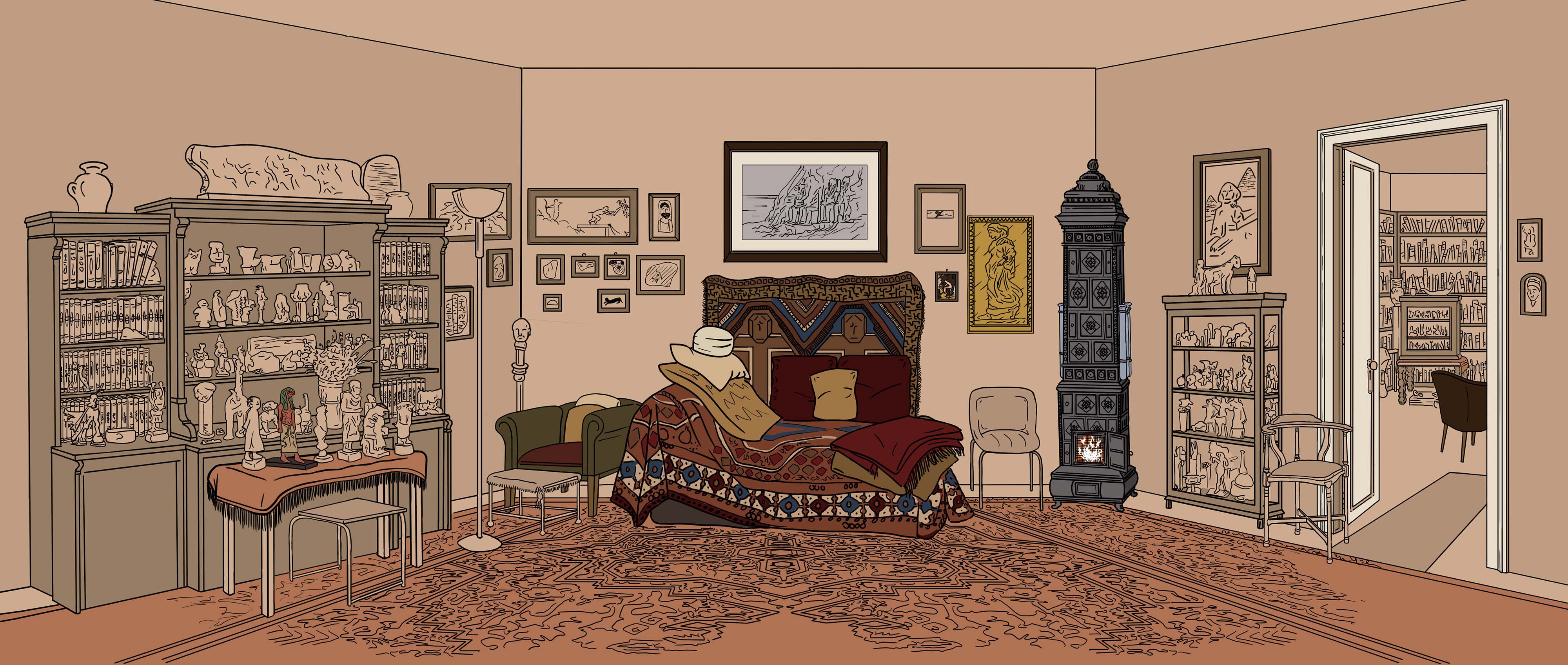

This bas-relief of Gradiva fascinated Freud, who developed Gradiva, the “lady who paces away,” into a paradigm for analysis. More about her significance is presented in the final section.
This painting of Oedipus and the Sphinx, copied after Jean August Dominique Ingres (1808), testifies to Freud’s continuing engagement with the Greek tragedy Oedipus Rex. The Oedipus complex—named for the protagonist who kills his father and marries his mother—was at the very center of Freud’s theory.
The couch is perhaps the most iconic and universal of psychoanalytic objects. Patients recumbent on the couch could not see Freud, seated in the chair behind their heads—meant to insure they would not be distracted by looking at him, thus allowing the freest possible movement of unconscious material to consciousness.
Freud sat here while patients spoke, out of their line of sight.
This image shows the Egyptian cliff temple of Ramesses II at Abu Simbel. Considered the greatest of the pharaohs, Ramesses II was a figure with whose strength and power Freud possibly identified.
The falcon-headed Egyptian god Horus was part of Freud’s voluminous collection of antiquities. The son of Isis and Osiris, Horus had intrigued Freud since childhood, when he encountered him in the family’s lavishly illustrated Phillipson Bible.
The black ceramic tiled stove regulated the room’s temperature, with two water tubes that maintained a constant level of humidity.
The oriental rugs on the floor and atop the small table on the left side of the room, as well as on the couch and wall behind it, are the only patterned elements in the room. Fin de siècle Viennese were entranced by arabesque patterns, believing in their psychosomatic effects.